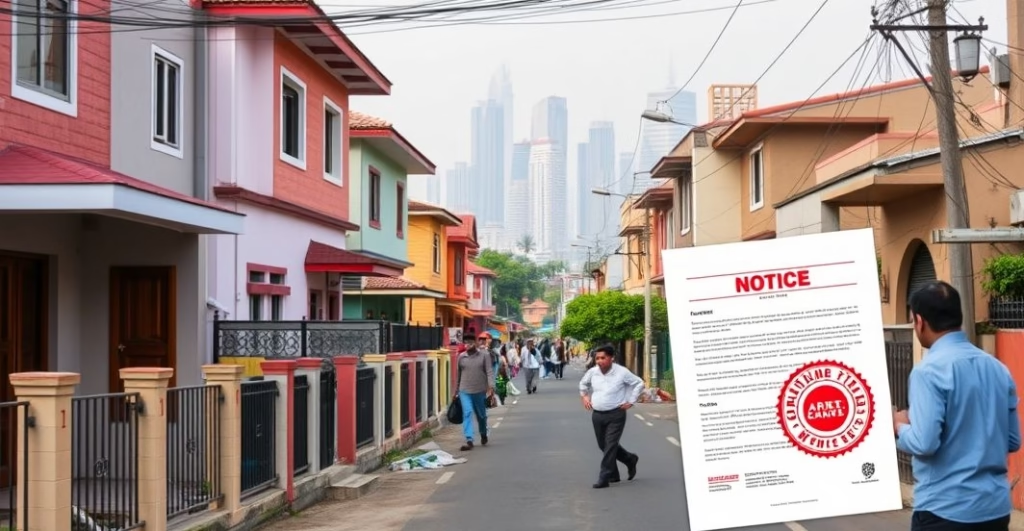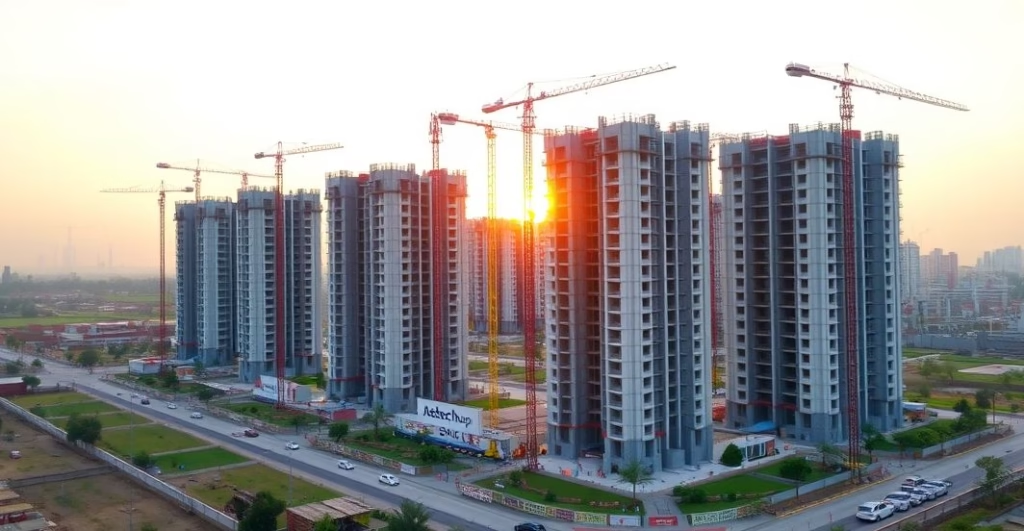Auto-published by Growwh – a smarter way to scale content and marketing. Want to know more? Chat with us.
TL;DR: GNIDA will issue partial OCs/CCs proportional to dues paid after 25% advance, unlocking possession for ready units. Buyers and developers should verify NOCs, payment records, and tripartite registration.
What changed: Greater Noida Industrial Development Authority (GNIDA) now permits partial occupancy certificates (OCs) and completion certificates (CCs) for projects where developers have deposited at least 25% of recalculated dues under the UP rehabilitation policy. Certificates will be issued in direct proportion to the amount paid — for example, if 40% of dues are cleared, certificates can cover 40% of a project’s units.
Why this matters to homebuyers and developers
For years, stalled projects in Greater Noida have left buyers waiting despite completed construction or near-complete units. Procedural delays—mainly delays in obtaining NOCs from multiple departments and repeated requirements for a fresh No Dues Certificate (NDC)—meant developers could not secure OCs even after partial payments and construction were finished.
The Authority’s new approach breaks that logjam by aligning possession with payments made, enabling immediate handovers for units that are ready and proportionately paid for. This reduces financial stress on developers and provides relief to homebuyers who have been waiting for possession.
How the proportional issuance works
- If a developer has paid 25% initially and further instalments bring the total paid to X%, GNIDA will issue OCs/CCs proportional to X% of units.
- Partial certificates will address the long-standing problem where missing fresh NDCs blocked occupancy applications due to payment timelines and delayed inter-departmental NOCs (fire, environment, water, electricity, planning, etc.).
- The policy balances Authority recovery with practical handover needs, avoiding a full stop on possession when most dues and construction milestones are complete.
What buyers should do now
- Confirm with the developer whether the project has applied for or received partial OCs/CCs and ask for a schedule of unit-wise handovers.
- Request documentation that shows the proportion of dues paid and the certificate coverage for your unit (percentage allocation or unit serial numbers, where applicable).
- Insist on registration of the tripartite sub-lease deed where applicable; the new GNIDA stance aims to unblock registrations that were previously stalled due to lack of fresh NDCs.
What developers should prepare
- Maintain clear payment records and upload proof of dues paid to relevant Authority portals to expedite proportional OC issuance.
- Coordinate proactively with fire, environment, water, electricity, planning, and architecture departments to finalize NOCs — a common bottleneck in past applications.
- Consider offering provisional possession agreements or timelines to buyers to facilitate funding of remaining dues, similar to suggestions previously raised by CREDAI.
Legal and investment considerations
Buyers — including non-resident Indians (NRIs) — should perform focused legal due diligence before accepting possession or paying further sums. For NRIs, specific legal checks and documentation requirements can vary; consider guidance on Legal due diligence for NRI property buyers in India to understand documentation, power of attorney use, and registration implications.
NRIs exploring real estate options in India may also benefit from specialized resources such as NRI Realty Edge, which covers practical tips for investment, possession, and regulatory compliance. For investors planning longer horizons, reading market outlooks like Future-Proof Your Wealth: Indian Real Estate in 2026 can help align possession timing and payment obligations with broader portfolio goals.
Practical tips for faster resolution
- Ask the developer for a clear written timeline for remaining payments and the expected proportion of units covered by newly issued OCs/CCs.
- Verify that the developer has applied for all statutory NOCs and request status updates or copies to track progress.
- If your unit is ready and covered under the proportional OC, coordinate with the developer and Registrar for timely tripartite sub-lease registration to secure legal possession.
Bottom line
The GNIDA move to issue partial occupancy and completion certificates tied to the percentage of dues paid is a pragmatic step to unclog stalled projects. It protects homebuyers’ interests by enabling possession where construction and payments support it, while also providing a pathway for developers to recover dues without indefinite procedural delays.
Stay proactive: verify documentation, track NOCs, and confirm sub-lease registration to ensure a smooth handover when partial certificates are issued.
This article was auto-generated as part of a smart content campaign powered by Growwh.com. Curious how we do it? Chat with us to learn more about our content automation systems.


